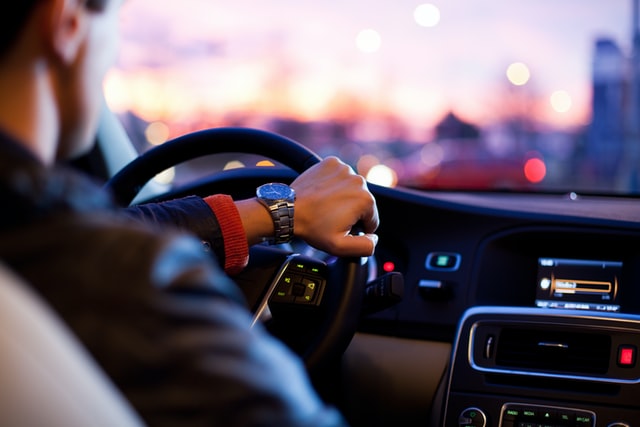Do you enjoy every ride? If you want to enjoy every time you sit in your car, then this is the right time to learn how to be a better driver, full of self-confidence.
The more time you spend behind the wheel, the better driver you will become. The best way to improve your driving skills is to practice driving situations such as entering and exiting highways, merging into traffic, passing other vehicles, negotiating curves, and managing adverse conditions such as rain or snow.
Driving a car is very easy, but driving it well is a lot more difficult.
Read these tips to get better at it.
You can’t drive if you don’t know how to use your car
The first step to being a good driver is knowing how to drive at all. You might think that driving a car is straightforward – and in many ways, it is – but it’s also a complex task that requires mastery of various skills. You need to know how to operate the pedals (and not just the ones on the floor), and you need to know how to operate the clutch and the gears properly.
You’ll also need to know how to use your car’s other controls, and more specifically, how they help you when you’re driving. For example, are your headlights working? Do you know where your turn signals are? What about the wipers? These things may seem obvious, but lots of new drivers forget about them until it’s too late.
Know your car
You need to know the dimensions of your car if you want to drive it well. You should know where the bumpers are and how wide your vehicle is. This is important because many collisions happen in parking lots because people aren’t aware of where their car ends.
Read your car’s manual
Knowing the details of your car is not just important for basic stuff like how to change a wheel, but also for understanding how certain settings work (like cruise control or traction control) or what warning lights mean.
Reading your manual may also reveal some useful tips on how to drive more efficiently and safely or even features you were previously unaware of.
Get a clean view
Always make sure that you have a clear view from inside your car before you start driving. Remove any garbage or clutter from the floor or dashboard so that you won’t be distracted while driving. Clear all snow from the roof of your car too, so that it doesn’t fall on your windshield while you’re driving.
Use your mirrors frequently
Looking in your mirrors is crucial for good driving habits. Check them frequently and use them in conjunction with your blind spot mirrors when changing lanes. You should never change lanes unless you check both side mirrors first and confirm there are no cars in either lane beside you. Never forget about those blind spots!
Be aware
Keep an eye out for other cars. Don’t assume that other drivers know more about the road rules than you do; this can put you in dangerous situations.
Never talk on your cell phone while driving. You have enough distractions without talking on the phone to your co-workers and friends.
If you take medication, ask the pharmacist about how much you should take and how often you should take it before you get behind the wheel.
Know what signs mean and what signals your car has given you that indicate something is wrong. It may be something like a car slowing down with no reason, or one tire losing air. If this happens, pull over immediately and check on your vehicle.
Don’t be afraid to ask questions
There’s no such thing as a stupid question when it comes to finding out more about your car. Ask for advice from someone who knows more about cars than you do or give the manufacturer’s helpline a call if you are unsure or have any questions you need answering.
Buckle up every time
No matter how short the drive, always wear your seatbelt. It only takes a moment to put it on and at that moment you could save your own life (and the lives of any passengers). If you find wearing a seatbelt uncomfortable, try adjusting the position of your seat.
Take care of your car
Make sure you have a well-maintained vehicle to drive. The most important thing you can do for your vehicle is to keep it clean, both inside and out. Keep the oil changed and make sure that proper air pressure exists in the tires. Check the levels of brake fluid, power steering fluid and coolant. If these are low, fill them up to the recommended levels.
Practice defensive driving
Defensive driving means always being aware of what other drivers may do in any situation. It involves knowing the common mistakes other drivers make so you can avoid them in similar situations. Always be alert for distracted or impaired drivers on the road. You may also take driving lessons to help improve your skills.
Stay in control
Always keep two hands on the steering wheel and use both feet for clutch and accelerator pedals if you want to become a better driver. Don’t look at cell phones, text messages, or emails while driving, even if you’re stopped at a traffic signal or stop sign. Keep one hand in the 9 o’clock position and another hand in the 3 o’clock position on the steering wheel so that you will have maximum control over your vehicle while making turns or sudden lane changes.
Don’t speed
If you’re driving a car with an automatic transmission, stay just below the speed limit. Some states require you to keep your foot off the accelerator while waiting at traffic lights, so you may as well do it at all times. The same advice goes for gas stations and other places where there’s a lot of stop-and-go traffic.
Explore the route you are driving
Do your homework on roads you plan to take before you leave for your drive. Know what conditions are like ahead of time — know what speed limits are and the posted speed limits in the area you plan to visit (to determine the fastest safe speed).
We believe that these tips have helped you and that you will continue to enjoy your rides!

